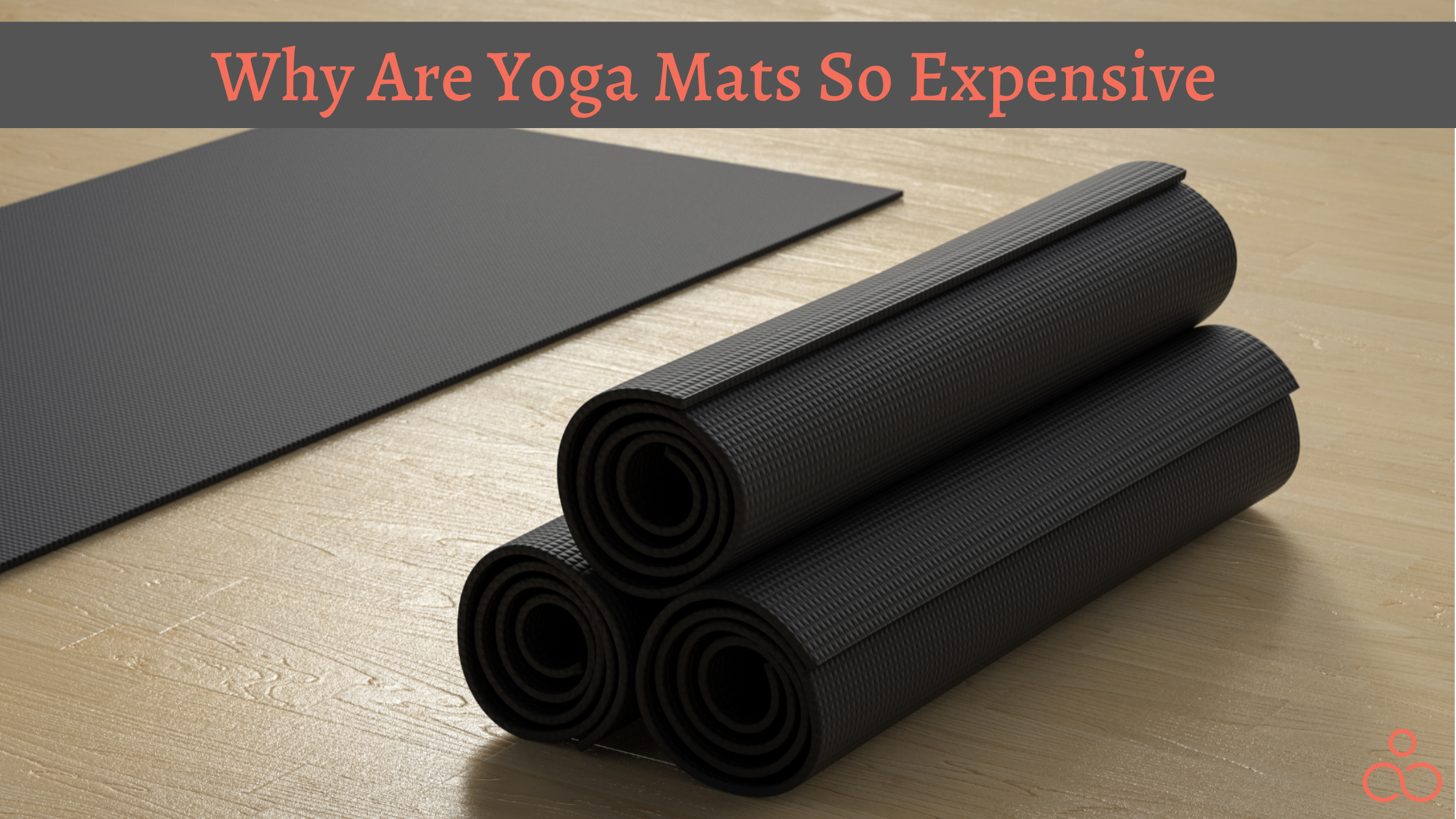
Why Are Yoga Mats So Expensive?
Yoga has become a popular form of exercise and relaxation, and with its growing popularity, the demand for yoga mats has increased too. However, if you’ve ever shopped for a yoga mat, you may have noticed that they can be quite expensive. Many people wonder why yoga mats are so expensive and if it’s worth paying the extra cost.
There are a few reasons why yoga mats can be expensive. Firstly, the materials used to make yoga mats are of high quality and are designed to be durable and long-lasting. Additionally, many yoga mats are eco-friendly, made from natural or recycled materials, which can increase their cost. Finally, the cost of manufacturing and shipping the mats can also contribute to the final price. But is the price worth it? Let’s explore this topic further.
Why Are Yoga Mats So Expensive?
Yoga mats are designed with special materials and textures to provide grip and support during practice. The cost of these materials, along with the added expenses of manufacturing and shipping, contributes to the higher price point. Additionally, many high-quality yoga mats are made with eco-friendly materials, which can also increase the price. However, investing in a durable and comfortable yoga mat can greatly enhance your practice and overall experience.

Why Are Yoga Mats So Expensive?
Yoga is a form of exercise that has gained immense popularity in recent times. It requires minimal equipment, but one item that stands out is the yoga mat. Yoga mats come in different sizes, colors, and materials. While some mats are inexpensive, others can be quite costly. In this article, we’ll explore the reasons why yoga mats are so expensive.
1. Material Quality
The quality of the materials used to make yoga mats determines their prices. Mats made from high-quality materials like natural rubber, organic cotton, and jute are more expensive than those made from synthetic materials. High-quality mats are also more durable, non-slip, and eco-friendly. They offer better cushioning and support, making them ideal for demanding yoga practices like Ashtanga or hot yoga.
There are also yoga mats that are PVC-free, which means they are free from harmful chemicals like phthalates and heavy metals. These mats are more expensive than traditional PVC mats, but they are safer for the environment and your health.
2. Brand Name
Another significant factor that affects the price of yoga mats is the brand name. Popular yoga brands like Lululemon, Manduka, and Jade Yoga have built a reputation for producing high-quality mats that are durable, eco-friendly, and non-slip. These brands invest heavily in research and development to come up with innovative materials and designs that cater to the needs of yogis.
While you can find cheaper yoga mats from lesser-known brands, they may not offer the same level of quality and durability. Investing in a well-known brand may be worth it in the long run, as you won’t have to replace your mat as often.
3. Size and Thickness
Yoga mats come in different sizes and thicknesses. The standard size is 68 inches long by 24 inches wide, but you can also find extra-large mats that are 78 inches long. Thicker mats offer more cushioning and support, making them ideal for people with joint problems or those who practice yoga on hard surfaces. However, thicker mats are more expensive than thinner ones.
If you’re tall or prefer more space to move around, you may need a larger mat, which is also more expensive. However, keep in mind that a larger mat may be heavier and more challenging to carry around.
4. Production Costs
The production costs of yoga mats also contribute to their prices. Mats made from natural materials like rubber and cotton require more labor and resources to produce than synthetic mats. The process of harvesting natural rubber, for instance, involves tapping trees and collecting the sap, which is then processed into rubber sheets. This process is time-consuming and requires skilled labor.
Mats made from recycled materials like plastic bottles also require a lot of energy to produce. The recycled plastic has to be cleaned, melted, and then molded into the desired shape. These processes add to the production costs, which are passed down to the consumer.
5. Marketing and Distribution
Marketing and distribution costs also play a role in the price of yoga mats. Brands that invest heavily in advertising and promoting their products will charge more for their mats to cover these costs. They also spend money on distribution, which involves shipping the mats to different stores and countries.
Smaller brands may not have the same marketing and distribution budgets as bigger brands, which is why their mats may be cheaper. However, these brands may not have the same level of quality and customer service as bigger brands.
6. Longevity
One of the benefits of investing in a high-quality yoga mat is its longevity. A durable mat can last several years, which means you won’t have to replace it as often. Cheaper mats may wear out faster and may not offer the same level of grip and support as a more expensive mat.
In the long run, investing in a high-quality mat may save you money, as you won’t have to keep buying new ones every few months.
7. Eco-Friendliness
Eco-friendliness is another factor that affects the price of yoga mats. Mats made from natural materials like rubber, cork, and jute are biodegradable and compostable, which means they won’t end up in landfills or oceans. These mats are also free from harmful chemicals that can harm the environment and human health.
While eco-friendly mats may be more expensive, they offer peace of mind knowing that you’re doing your part to protect the planet.
8. Versatility
Some yoga mats are designed to be versatile, which means they can be used for different types of exercises like Pilates, stretching, and meditation. These mats are usually thicker and more durable than regular yoga mats, which makes them more expensive.
Investing in a versatile mat may be worth it if you’re someone who likes to switch up your workouts and don’t want to invest in multiple mats.
9. Non-Slip Surface
A non-slip surface is crucial for yoga practitioners, as it provides the necessary grip and support during poses. Mats made from high-quality materials like natural rubber and cork offer better grip than synthetic mats. These mats are more expensive, but they provide a safer and more comfortable practice.
10. Aesthetics
Finally, the aesthetics of a yoga mat can also affect its price. Mats with intricate designs, patterns, and colors are usually more expensive than plain mats. While aesthetics may not be the most important factor when choosing a yoga mat, it can make a difference in how you feel during your practice.
In conclusion, the price of yoga mats is influenced by several factors like material quality, brand name, size, production costs, marketing and distribution, longevity, eco-friendliness, versatility, non-slip surface, and aesthetics. While it may be tempting to opt for a cheaper mat, investing in a high-quality mat can make a significant difference in your practice and overall well-being.
Frequently Asked Questions
Yoga mats are an essential aspect of any yoga practice, but have you ever wondered why they can be so pricey? Here are some common questions and answers about why yoga mats are expensive.
What materials are used to make yoga mats?
Yoga mats are typically made from materials such as rubber, PVC, or eco-friendly materials like natural rubber or cork. The cost of these materials can vary, with natural and eco-friendly options generally being more expensive than synthetic materials. Additionally, some mats may have added features like extra cushioning or non-slip surfaces, which can also contribute to the cost.
Overall, the quality and durability of the materials used in a yoga mat can affect its price point. Cheaper materials may wear down more quickly, requiring more frequent replacement, while higher quality materials can last for years with proper care.
Why are eco-friendly yoga mats more expensive?
Eco-friendly yoga mats are made from sustainable materials like natural rubber or cork, which are more expensive to source than synthetic materials. Additionally, the production process for eco-friendly mats often involves more time and effort than mass-produced synthetic mats. This can include hand harvesting the rubber or cork, as well as limiting the use of harmful chemicals in the manufacturing process.
While eco-friendly mats may have a higher upfront cost, they are often considered a worthwhile investment for both the environment and the longevity of the mat.
Why are certain yoga mat brands more expensive than others?
Some yoga mat brands may charge more due to their reputation and perceived quality. These brands may have a long-standing history in the yoga community, or may be known for using high-quality materials and innovative designs. Additionally, some brands may have a higher markup due to their marketing and advertising costs.
However, it’s important to note that a higher price tag doesn’t always equate to a better yoga mat. There are many affordable options on the market that are just as durable and effective as their more expensive counterparts.
Are there any benefits to investing in a more expensive yoga mat?
While a higher price doesn’t necessarily mean a better yoga mat, there are some benefits to investing in a more expensive option. For example, a higher quality mat may have better grip, which can be particularly important for more active or challenging yoga practices. Additionally, a durable and long-lasting mat can save you money in the long run by reducing the need for frequent replacements.
Ultimately, the decision to invest in a more expensive yoga mat comes down to personal preference and individual needs. It’s important to consider factors like material, grip, and durability when selecting a mat that works for you.
Can I find cheaper alternatives to traditional yoga mats?
If you’re looking for a more affordable option than traditional yoga mats, there are a few alternatives to consider. Some people opt to use a towel or blanket in place of a mat, while others may use a thin foam mat or even a rug. However, it’s important to note that these alternatives may not provide the same level of support and grip as a traditional yoga mat.
If cost is a major factor, it’s worth exploring different brands and materials to find a mat that fits your budget without sacrificing quality. Additionally, many yoga studios and gyms offer communal mats for use during classes, which can be a good option for those who don’t want to invest in their own mat.
Cheap VS Expensive Yoga Mat | Is it worth your money?
As a professional writer, I have delved into the world of yoga and its accessories, and I can understand why some might find yoga mats to be expensive. However, it is important to consider the quality of the mat, the materials used, and the manufacturing process. A good quality yoga mat can provide the necessary grip, cushioning, and support needed during a yoga practice, which can ultimately enhance the experience and prevent injuries. Cheaper mats may not offer the same level of quality and durability, which can lead to frustration and additional expenses in the long run.
Another factor to consider is the sustainability and ethical practices of the manufacturer. Many yoga mats are made with eco-friendly materials, such as natural rubber or cork, which can be more expensive than synthetic materials. Additionally, some manufacturers prioritize fair labor practices and pay their workers a living wage, which can also contribute to the higher cost of the product. Ultimately, investing in a high-quality yoga mat can not only benefit your practice but also support ethical and sustainable practices within the industry.

